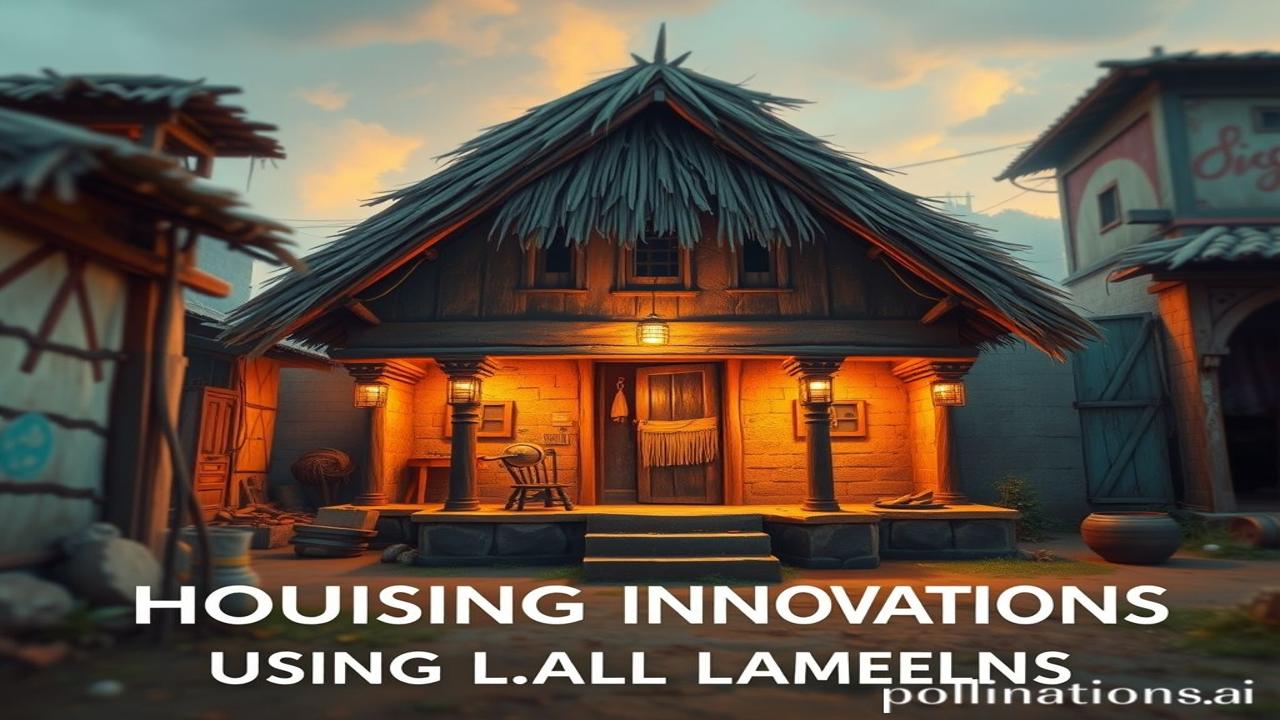Mitti Ki Khushboo, Aasman Ki Chhat: Housing Innovations Using Local Materials
Kabhi socha hai, jab baarish ki pehli boond mitti pe padti hai, toh woh kaisi khushboo hoti hai? Woh khushboo sirf mitti ki nahi hoti, woh toh hamare itihas ki, hamari jadon ki, hamare ghar ki bhi hoti hai. Aaj hum baat karenge unhi gharon ki, jo sirf eenton aur cement se nahi, balki mitti, baans, aur patthar jaise local materials se bane hain. Woh ghar jo sirf shelter nahi, balki sanskriti aur prakriti ka ek khoobsurat sangam hai.
Ancient Echoes: A Historical Perspective
Local materials ka use koi nayi baat nahi hai. In fact, yeh toh humanity ki shuruwat se chala aa raha hai. Think about it: the Indus Valley Civilization, with its meticulously planned cities, used baked bricks made from locally sourced clay. Aaj bhi, har region apne unique style se ghar banata tha – Rajasthan mein sandstone, Kerala mein bamboo aur coconut leaves, Himachal mein wood aur slate.
The beauty of using local materials lies in their adaptability to the climate and environment. Ancient architects knew exactly which materials would provide the best insulation against the scorching summer heat and the chilling winter winds. Yeh knowledge generations se pass on hoti aayi, shaping the landscape of our villages and towns.
Living, Breathing Homes: The Human Story
Imagine a small village in Assam, a few centuries ago. Ma Lakshmi is preparing dinner in her bamboo hut, the smoke from the earthen stove curling through the woven walls. Her husband, a farmer, is returning from the fields, his face etched with the day’s labor. The sound of children laughing echoes through the air, as they play in the courtyard, their games fueled by the freedom and safety of their home.
“Arre, aao beta! Dekho, aaj ki taazi sabzi!” Ma Lakshmi calls out, her voice warm and inviting.
These homes were more than just structures; they were centers of community, bastions of family life, and reflections of the local culture. The materials used were not just economical and readily available; they were also imbued with a sense of belonging, a feeling of rootedness that connected people to the land.
Dharohar Aur Pehchan: The Legacy Continues
Aaj, jab hum development aur modernization ki baat karte hain, toh often local materials aur traditional building techniques ko bhool jaate hain. But the truth is, these methods are not just relics of the past; they are crucial for a sustainable future. We can see echoes of these ancient practices in modern eco-friendly architecture.
Think of the resurgence of mud houses, especially in rural areas. They are not only beautiful and cost-effective but also provide excellent insulation and reduce the carbon footprint. In a world grappling with climate change, embracing these traditional methods is not just about preserving our heritage; it’s about building a more sustainable and resilient future. This is the essence of Bharatiyata – blending tradition with modernity to create a harmonious and balanced society.
Fun Fact: The Magic of Mud!
Log samajhte hain ki mud houses gareebi ki nishani hain, lekin asli sach yeh hai ki mud houses, especially when constructed using techniques like cob or rammed earth, are incredibly durable and earthquake-resistant. They can last for centuries! Plus, mud is a naturally fire-resistant material. Surprising, isn’t it?
Visual Symphony: A Sensory Experience
Imagine walking through a village in Rajasthan, the air thick with the scent of sun-baked earth and spices. The sandstone walls of the houses gleam in the golden light, their intricate carvings telling stories of kings and warriors. The sound of folk music drifts from a nearby courtyard, the rhythm echoing the heartbeat of the community. The cool, smooth surface of the mud walls offers a welcome respite from the scorching heat. This is more than just a visual experience; it’s a sensory symphony that connects you to the land and its people.
Antim Vichar: A Call to Remember
“Vasudhaiva Kutumbakam” – The world is one family. Let’s build homes that reflect this interconnectedness, using materials that honor our planet and connect us to our roots. Let’s remember the wisdom of our ancestors and build a future where tradition and sustainability walk hand in hand.
